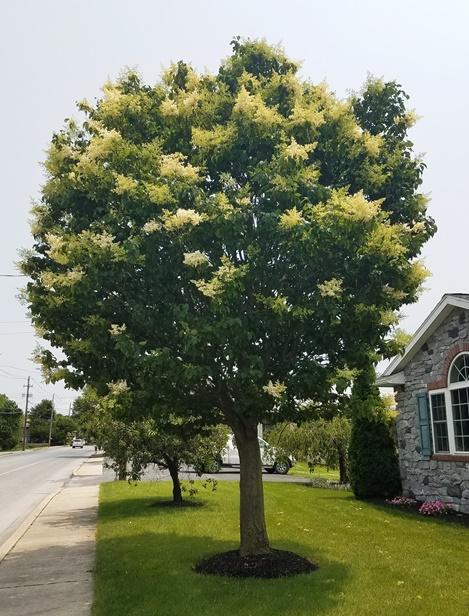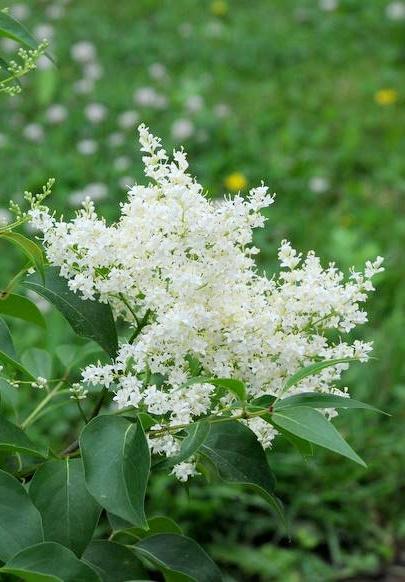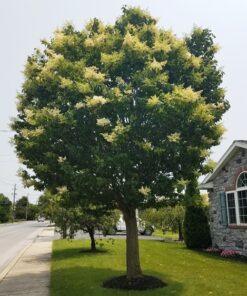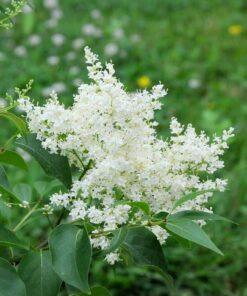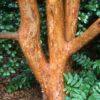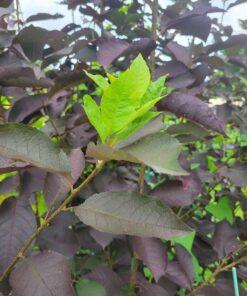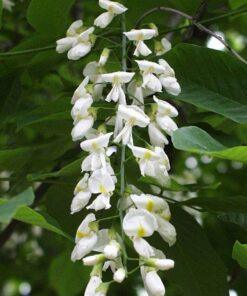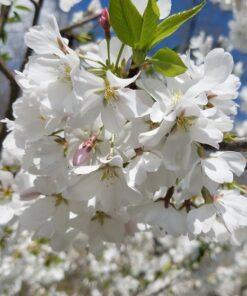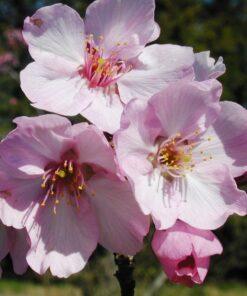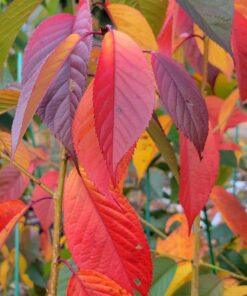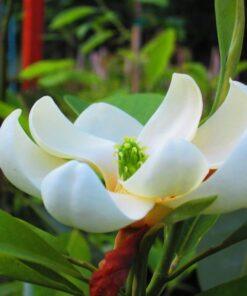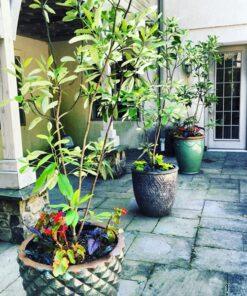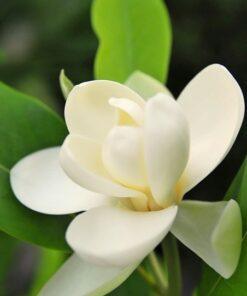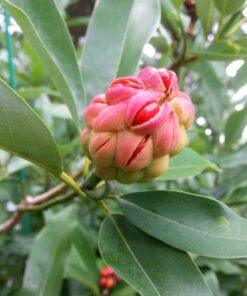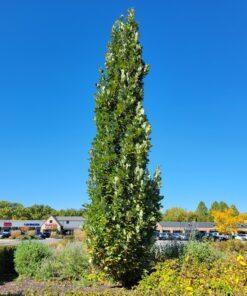Syringa reticulata, ‘Ivory Silk’ Lilac Tree
$149.00
Ivory Silk Japanese Lilac is a smaller tree growing up to 15′ tall with a rounded crown. It has creamy white and amazingly fragrant flowers arranged in dense, terminal clusters (panicles up to 12″ long). It blooms in late May to mid-June, and later than most other varieties of lilac. It makes an outstanding fragrant flowering tree for any landscape with its beautiful flowering, hardiness, and bloom periods that are on full display long after most trees have ended their flowering. It attracts butterfly’s, hummingbirds, and pollinating insects. This tree has an attractive reddish-brown bark. USDA zones 5 -8
Related products
Shade Trees
Prunus virginiana 'Canada Red' Chokeberry is a fast growing smaller native shade tree full of colorful red/ burgundy leaves, which is a great contrast to the many green leafed trees. The abundant small fruits are also red, and are a favorite of songbirds.
Flowering Trees
The American Yellowwood is a sought after fragrant and showy American native tree with beautiful white racemes flowers. It is a beautiful native tree with long graceful trunks and flowers around May/ June in USDA Zone 6. The white flowering racemes are quite showy.
All Trees
Akebono is a beautiful and hard-to-find flowering cherry tree with flowers that rival the outstanding beauty of the Yoshino cherry tree. It has commanded our respect for its beauty, and you also get the seasonal benefit of it flowering just before the Yoshino cherry tree.
Flowering Trees
The Helen Taft Cherry tree is a fantastic flowering cherry tree variety named after a female trailblazer in the early 1900's who also happened to be the wife of President Howard Taft. She was one of the key people who helped create the Cherry Blossom arboretum along the Potomac river bordering Washington DC and Virginia. This specimen is a outstanding flowering tree specimen, and would look great in a grouping, or in a tree line! It is a deciduous upright tree with a spreading crown, reaching both a height and width of 20' x 25'+ after 25 years of growth. We find that this tree is very hardy with minimal problems with insects and disease. It is most comparable to its female parent, Prunus x yedoensis Yoshino, except for its slightly larger size and noticeably large pink flowers. This tree is a true winner, and we are quite impressed with its many positive characteristics. It is Highly recommended!
Flowering Trees
The Moonglow Magnolia is one of our favorite magnolias. It is a hard-to-find semi-evergreen retaining more than 50% of its leaves through the winter, and develops many flowering buds blooming June through August. It is a faster growing variety of Sweetbay Magnolia, and produces the same beautiful lemon scented flowers. This wonderful tree can be used as an all-season privacy tree to help block an undesirable view. The Moonglow Magnolia is also perfect for your outdoor living spaces. It offers that exotic look along with the many luscious flowers, and a heavenly fragrance from May through August. This is the tree that everyone wants to see out their window full of lush green leaves...in summer and mid-winter. It is highly recommended!
Flowering Trees
Sweetbay Magnolia trees produce fragrant white flowers and brilliant red seed pods at the end of summer. This gorgeous tree is very fragrant and is a must-have for well designed landscapes! It blooms from May through July with beautiful white flowers that are so fragrant and just a constant reminder about the true beauty of nature. It is also a wildlife tree and attracts birds feeding on its red seeds in August and September. These grow to good sized trees and a great value of beauty for the price.
Columnar Trees
The Columnar English Oak offers the beauty and elegance of the English Oak in a upright narrow columnar form that becomes the star of a landscape design when planted in symmetrical groups of three or five.. The juxtaposition of these trees planted in a design can be breathtaking. These gorgeous trees put the full beauty of the English Oak in an approachable height to see up close and personal. The tight narrow upright form allows one to approach the tree and closely observe the beauty and delicacy of its leaves, acorns, and branching.

